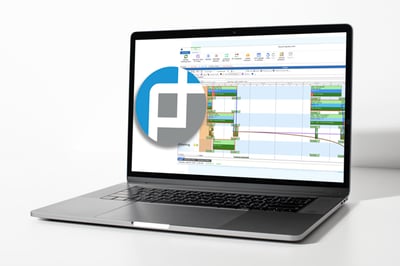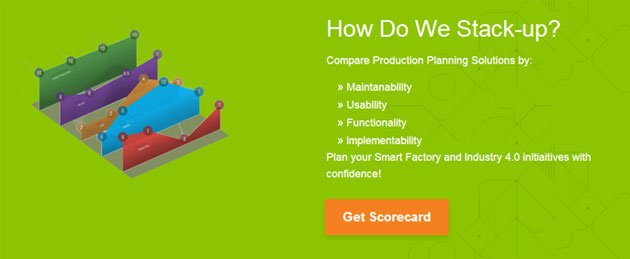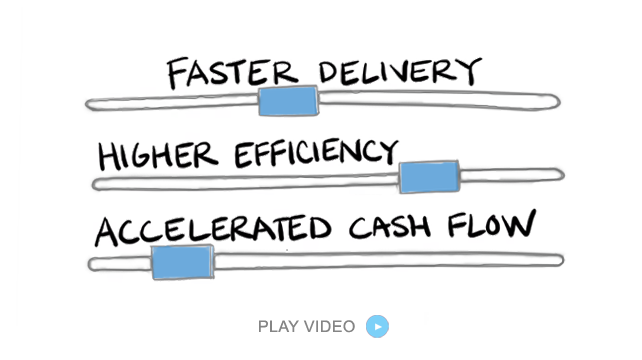Handling Material Constraints in Production Planning for Industrial Manufacturing
In industrial manufacturing, material constraints can make or break production plans. As a Purchasing Manager, you're at the forefront of ensuring that raw materials and components flow seamlessly into the production process. But what happens when supply chain disruptions, fluctuating costs, or unpredictable demand collide with the reality of finite resources? The answer lies in leveraging cutting-edge tools and integrations like PlanetTogether combined with ERP systems such as SAP, Oracle, Microsoft Dynamics, Kinaxis, or Aveva.
This blog looks into how integrating advanced planning and scheduling (APS) solutions with ERP systems can help Purchasing Managers tackle material constraints, optimize procurement, and drive production efficiency.

Understanding Material Constraints
Material constraints are limitations that arise when the availability of raw materials, components, or parts fails to meet production requirements. Common causes include:
Supplier Delays: Delivery schedules not aligning with production timelines.
Inventory Shortages: Lack of buffer stock due to just-in-time inventory practices.
Price Volatility: Fluctuations in material costs impacting procurement budgets.
Quality Issues: Materials failing to meet required standards or specifications.
For Purchasing Managers, these constraints translate into operational challenges, including missed production deadlines, increased costs, and strained supplier relationships. To address these issues effectively, robust planning and real-time visibility are essential.

The Role of Advanced Planning and Scheduling Systems
APS systems like PlanetTogether are designed to enhance production planning by providing real-time insights into material availability, production schedules, and capacity constraints. When integrated with ERP systems such as SAP, Oracle, Microsoft Dynamics, Kinaxis, or Aveva, these tools create a powerful ecosystem that bridges the gap between procurement and production.
Key Benefits of Integration:
End-to-End Visibility: Integration provides a unified view of procurement, inventory, and production schedules, enabling Purchasing Managers to identify potential material shortages before they impact production.
Dynamic Rescheduling: PlanetTogether’s APS capabilities allow dynamic adjustments to production plans based on real-time changes in material availability, ensuring minimal disruptions.
Improved Collaboration: Integrated systems enhance communication between purchasing, production, and supply chain teams, fostering a collaborative approach to problem-solving.
Cost Optimization: By synchronizing material procurement with production demand, the integration minimizes excess inventory and reduces carrying costs.

How Integration Addresses Material Constraints
Real-Time Inventory Management
When PlanetTogether integrates with ERP platforms like SAP or Microsoft Dynamics, Purchasing Managers gain access to real-time inventory data. This capability allows you to:
Monitor stock levels across multiple locations.
Predict material shortages using advanced analytics.
Trigger automatic reorders when inventory falls below predefined thresholds.
For example, a facility using PlanetTogether and SAP can create automated alerts for critical materials, ensuring timely procurement and reducing the risk of stockouts.
Enhanced Supplier Coordination
Integration facilitates seamless communication with suppliers by providing accurate and up-to-date forecasts. Using Oracle’s ERP system in conjunction with PlanetTogether, for instance, you can:
Share production schedules and material requirements with suppliers in real time.
Negotiate flexible delivery terms based on predictive demand models.
Monitor supplier performance to ensure on-time delivery and quality compliance.
These capabilities empower Purchasing Managers to build stronger supplier relationships and mitigate risks associated with unreliable partners.
Scenario Planning and What-If Analysis
Handling material constraints often requires evaluating multiple scenarios to determine the best course of action. PlanetTogether’s APS system excels in scenario planning, enabling you to:
Assess the impact of delayed shipments on production timelines.
Identify alternative suppliers or materials to fill gaps.
Reallocate existing inventory to prioritize high-value orders.
When paired with Kinaxis’ supply chain planning tools, Purchasing Managers can run simulations that consider both material and capacity constraints, ensuring well-informed decisions under pressure.
Demand-Driven Procurement
Traditional procurement strategies often rely on static forecasts, leading to overstocking or understocking. By integrating PlanetTogether with ERP systems like Aveva, you can transition to a demand-driven approach that:
Aligns procurement orders with real-time production needs.
Reduces waste by minimizing surplus inventory.
Enhances responsiveness to changes in customer demand.
This shift ensures that materials are procured just in time, striking the perfect balance between availability and cost-efficiency.

Best Practices for Implementation
To maximize the benefits of integration, consider the following best practices:
Start with Data Quality: Ensure that your ERP system contains accurate and up-to-date information on inventory levels, supplier data, and production schedules.
Engage Cross-Functional Teams: Collaborate with production, supply chain, and IT teams to align goals and expectations.
Leverage Training and Support: Provide comprehensive training for your team to fully utilize the capabilities of integrated systems like PlanetTogether and SAP or Oracle.
Continuously Monitor and Optimize: Use key performance indicators (KPIs) such as inventory turnover rates and supplier lead times to measure success and identify areas for improvement.
Material constraints are an inevitable part of industrial manufacturing, but they don’t have to derail your production plans. By leveraging the power of integrated systems like PlanetTogether and leading ERP platforms, Purchasing Managers can achieve greater visibility, efficiency, and flexibility in managing procurement.
From real-time inventory management to enhanced supplier coordination and dynamic rescheduling, integration offers a holistic solution to navigating the complexities of material constraints. As you implement these strategies, you’ll not only optimize your production processes but also drive cost savings and strengthen your competitive edge.
Take the first step towards transforming your material management practices—explore the possibilities of integration today. The future of manufacturing efficiency is within your reach. Are you ready to take your manufacturing operations to the next level? Contact us today to learn more about how PlanetTogether can help you achieve your goals and drive success in your industry.
Topics: Industrial Manufacturing, PlanetTogether Software, Integrating PlanetTogether, Demand-Driven Procurement, Real-Time Inventory Management, Improved Forecast Accuracy, Scenario Planning and What-if Analysis, Enhanced Production Flexibility, Streamlined Supplier Communication





















LEAVE A COMMENT